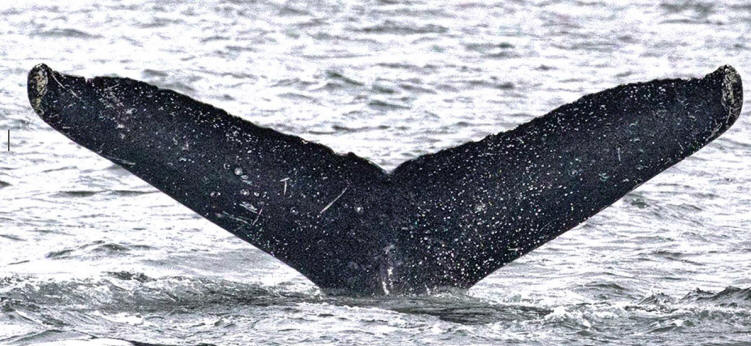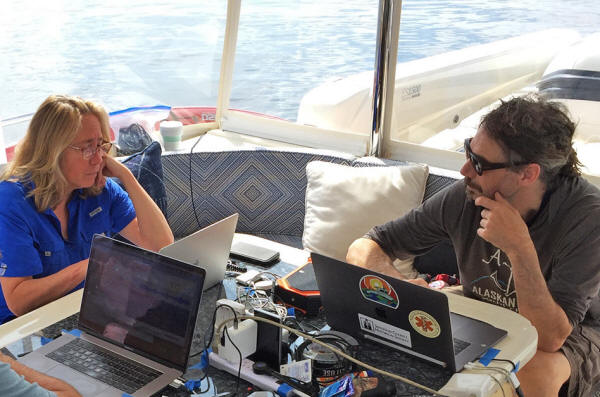|

by Whale-SETI
December 12, 2023
from
SETI Website
|
About the SETI
Institute
Founded in 1984, the SETI Institute is a non-profit,
multi-disciplinary research and education organization
whose mission is to lead humanity's quest to understand
the origins and prevalence of life and intelligence in
the universe and share that knowledge with the world.
Our research
encompasses the physical and biological sciences and
leverages data analytics, machine learning, and advanced
signal detection technologies.
The SETI Institute
is a distinguished research partner for industry,
academia, and government agencies,
including NASA and
the National Science Foundation. |

Image Credit: Jodi Frediani.
NOAA/National
Marine Fisheries Research
Permit 19703.
December 12, 2023, Mountain View,
CA
A team of scientists from the
SETI Institute, University of
California Davis and the Alaska Whale Foundation, had a close
encounter with a non-human (aquatic)
intelligence.
The Whale-SETI team has been studying
humpback whale communication systems in an effort to develop
intelligence filters for the search for extraterrestrial
intelligence.
In response to a recorded humpback 'contact' call
played into the sea via an underwater speaker, a humpback whale
named Twain approached and circled the team's boat,
while responding in a conversational style to the whale 'greeting
signal.'
During the 20-minute exchange, Twain responded to
each playback call and matched the interval variations between each
signal.
A description and analysis of the encounter appears in a recent
issue of the Journal PeerJ entitled: "Interactive
Bioacoustic Playback as a Tool for detecting and exploring Nonhuman
Intelligence - 'Conversing' with an Alaskan Humpback Whale."
"We believe this is the first such
communicative exchange between humans and humpback whales in the
humpback 'language'," said lead author Dr. Brenda McCowan
of U.C. Davis.
"Humpback whales are extremely intelligent,
have complex social systems, make tools - nets out of bubbles to
catch fish -, and communicate extensively with both songs and
social calls," said coauthor Dr. Fred Sharpe of the
Alaska Whale Foundation.
 
Left: Dr. Fred Sharpe.
Right: Dr.
Brenda McCowan and Dr. Fred Sharpe
at work onboard
the Blue Pearl.
Image
credit: Jodi Frediani.
"Because of current limitations on
technology, an important assumption of the search for
extraterrestrial intelligence is that extraterrestrials will be
interested in making contact and so target human receivers.
This important assumption is certainly
supported by the behavior of humpback whales," said Dr.
Laurance Doyle of the SETI Institute, a coauthor on the
paper.
Similar to studying
Antarctica as a proxy for
Mars,
the Whale-SETI team is studying intelligent
terrestrial, non-human communication systems to develop filters
to apply to any extraterrestrial signals received.
The mathematics of information theory to quantify
communicative complexity, (for example rule structure embedded in a
received message) will be utilized.
Other team members and coauthors of the paper are Dr. Josie
Hubbard, Lisa Walker, and Jodi Frediani, with
specialties in animal intelligences, humpback whale song analysis,
and photography and behavior of humpback whales, respectively.
A second paper by the team will 'soon' be
available (Humpback
Whales blow Poloidal Vortex Bubble Rings) on the
non-audio communicative behavior of humpback whales:
bubble rings made in the presence of (and
possibly for) humans...
The authors would like to acknowledge the
Templeton Foundation Diverse Intelligences Program for financial
support of this work.
Research conducted under NOAA/National Marine Fisheries Research
Permit 19703.
Video
|




